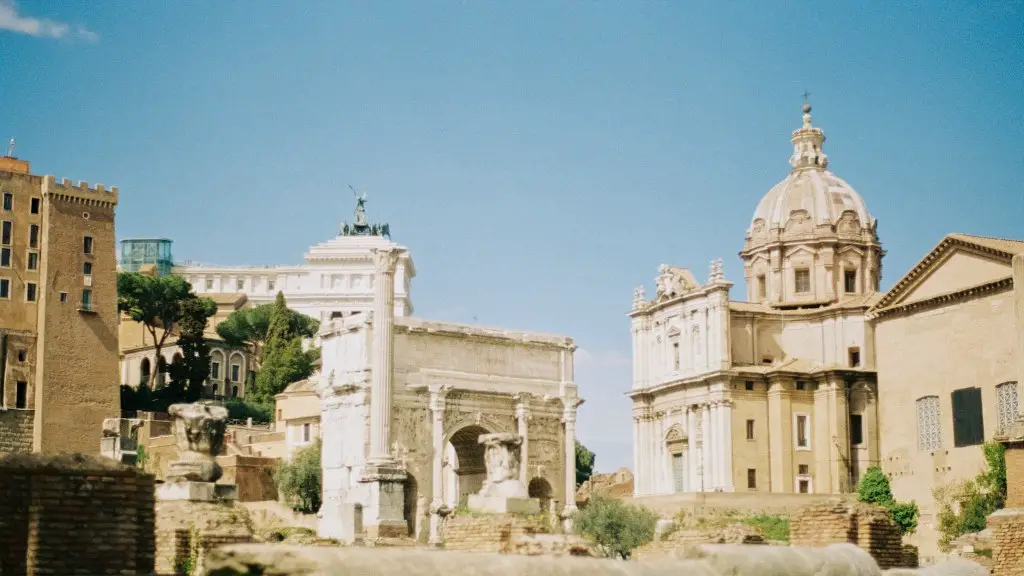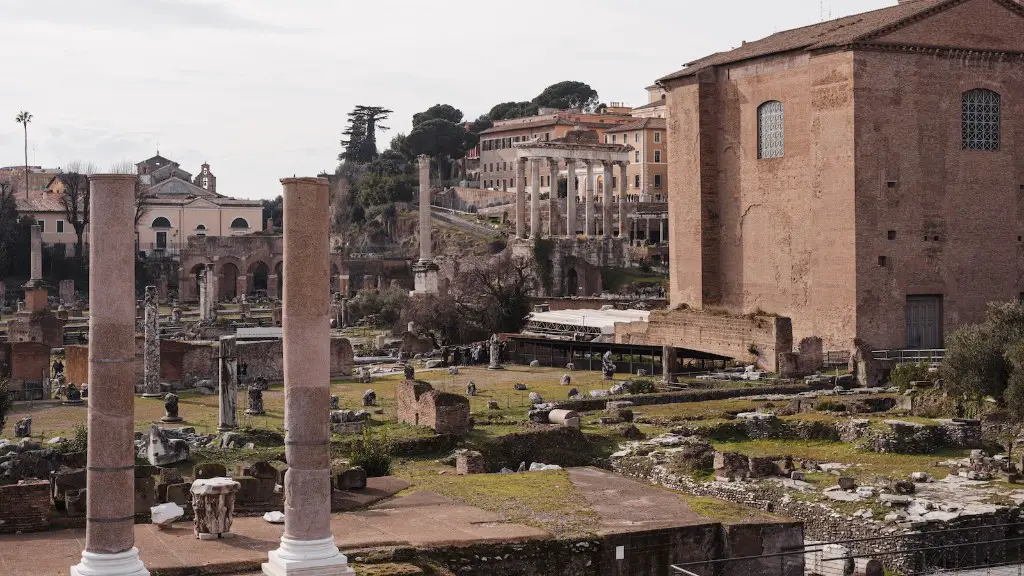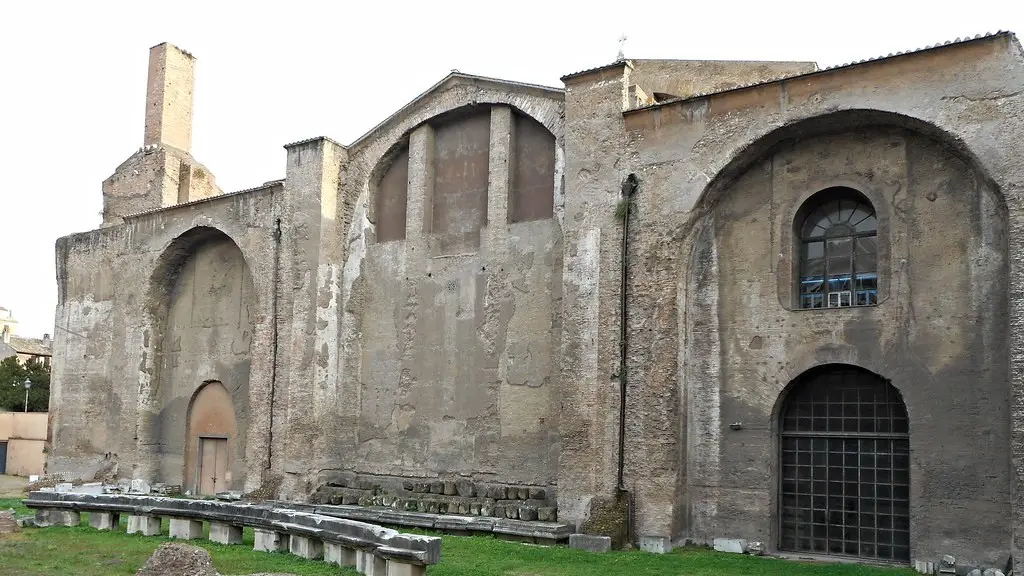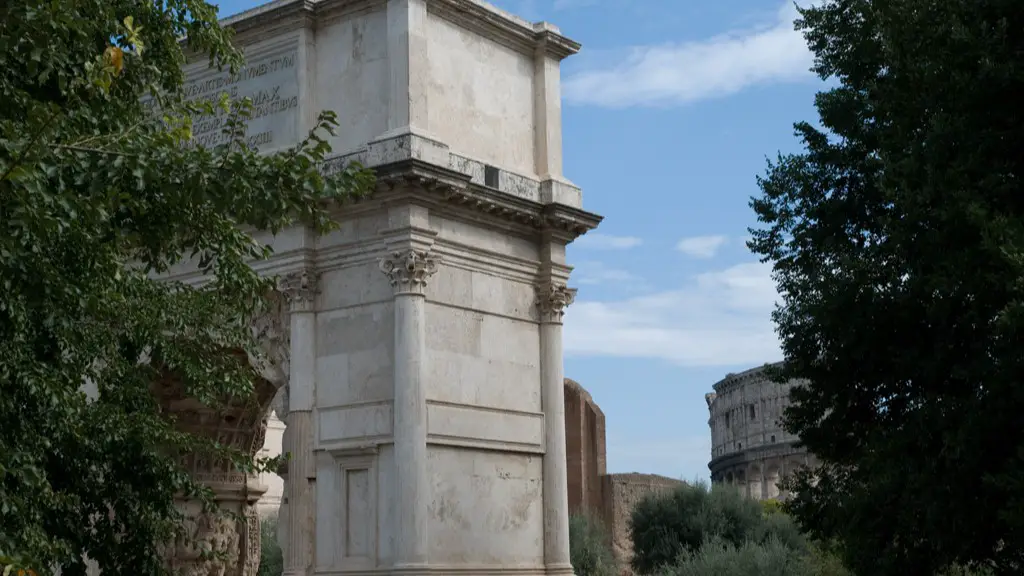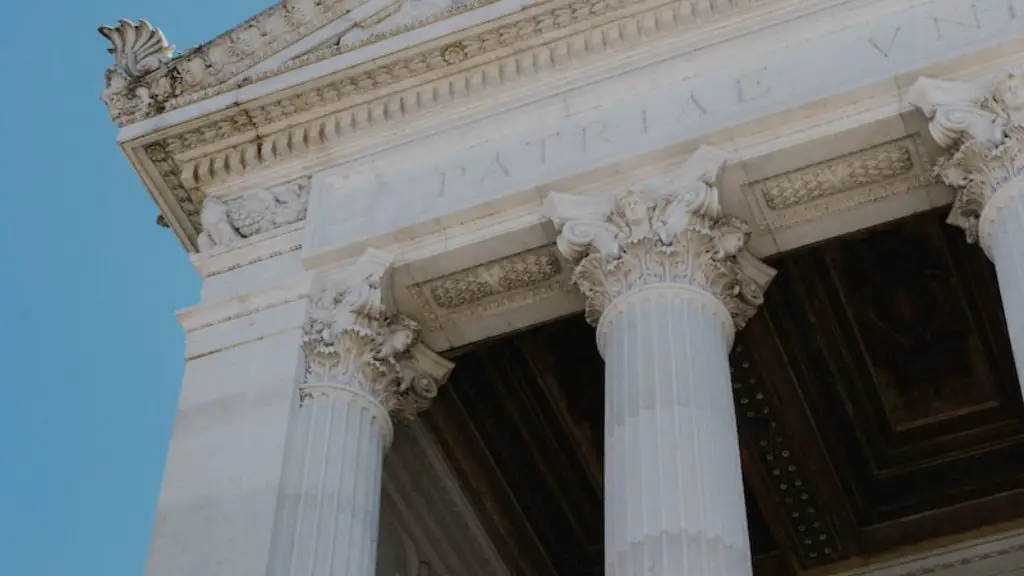Introduction
Ancient Rome was an incredible power that exerted its influence across the known world using military might and political ingenuity. One of its greatest achievements was its ability to trade across the Mediterranean and beyond. Understanding the trading connections of Ancient Rome is an important element of understanding the history of the Empire and its legacy. Ancient Rome’s extensive network of trade connections represent a significant aspect of its power and wealth.
Background
Although the origins of Rome are rooted in Italy and it took a long time for the Empire to develop its trading connections, there are ancient accounts of Roman merchants engaging in foreign trade as early as the 4th century BCE. Trade was integral to Ancient Rome, as it brought new goods and resources from foreign lands, but it was also a lucrative economic activity. Foreign trade was a major source of income for the Romans, who developed a wide range of trading partnerships with other Mediterranean states and even ventured as far east as India in search of new resources.
Foci of Trade
The Ancient Roman Empire was a vast area comprising much of modern-day Europe, North Africa and the Near East. This meant that Rome had access to a large number of trading partners and established traditional trade routes. The main focus of Ancient Rome’s trade was the Mediterranean Sea, particularly the coasts of the western Mediterranean. However, Rome also traded with the countries of the Near East, North Africa and parts of Europe beyond the Mediterranean.
Types of Trade
Ancient Rome engaged in a variety of forms of trade with its neighbours, ranging from bartering to commercial exchanges. In certain areas, trading partnerships with foreign states were established and Rome’s economy was heavily reliant on maritime trade. This meant that Roman merchants needed to learn the language and customs of their trading partners, as well as navigating the dangerous sea routes.
Commodities
The Romans traded a wide range of different commodities, from essential resources to luxury goods. For example, grains and wine were important staples of Roman trade, as were timber and metals from the provinces. Luxury goods were also highly sought after by the wealthy people of Rome, particularly textiles and art works from the East. Additionally, Roman merchants often capitalised upon the demand for wild animals in Ancient Rome, they became a lucrative form of trade, with exotic species being imported from every corner of the world.
Political Aspects
Trade was not just about the economic benefits for Ancient Rome; it was also about establishing political relationships. Through trade, Rome was able to establish closer relationships with its neighbours, as well as demonstrating its own economic and military prowess. This was particularly true in the case of Rome’s trading partners in the East, which were sometimes heavily influenced by Rome’s trading decisions.
Religious Aspects
Trade was also an important aspect of Ancient Rome’s religious practices. Rome was a highly religious society and traded extensively in holy relics and artefacts from various religions. This helped to spread the influence of Rome’s own religions, such as Christianity and Paganism, throughout the Empire.
Legacy
The legacy of Ancient Rome’s trading activities extends well beyond the Empire itself, with many of its former trading partners still retaining close ties with Italy to this day. Ancient Roman traders developed a network that remains as a part of the Mediterranean’s modern trading system, linking countries together in an economic web that has resurfaced time and time again.
Technology
The most important factor in Ancient Rome’s success in trading was the development of new technologies. The port of Ostia, which was founded in the 4th century BCE, was one of the main hubs for Roman trade and was made possible thanks to the Roman’s advances in engineering. This allowed them to launch and maintain fleets of trading vessels that allowed them to travel all over the Mediterranean.
Conclusion of Trade
Ancient Rome’s trade network allowed it to acquire resources from all over the known world, from grain to exotic animals. The technology to support a large trading fleet was also fundamental to Rome’s success and its influence extended far beyond its own borders. Trade allowed Ancient Rome to establish itself as an economic and political power, one whose influence is still seen today.
Political Impact
Ancient Rome’s extensive trading network provided it with extensive political power and influence, as it was able to establish its own economic rules and regulations over its trading partners. The relationship between Rome and its trading partners was often one of patronage, as Rome used its wealth to establish political alliances, as well as economic ones.
Cultural Impact
The cultural impact of Ancient Rome’s trading activities is often overlooked. By trading with countries in the East, Rome was exposed to a variety of different philosophies and cultures, which often made their way back to the Empire in the form of literature, art, and philosophy. This allowed Ancient Rome to gain new perspectives on life and the world around them.
Economic Impact
The economic impact of Ancient Rome’s trade network was immense. Rome was able to acquire wealth in the form of resources, as well as foreign currencies, which helped to make the Roman economy one of the most stable in the ancient world. The economic stability provided by Rome’s trading activities also helped to make it a powerful political force.
Global Impact
Finally, Ancient Rome’s trading network had a global impact, which is still visible today. For example, elements of the Roman Empire’s trading networks are still visible in the Mediterranean, with several cities retaining their Roman names and trading routes established almost 2,000 years ago still in use. What’s more, the global impact of Rome’s trading practices can be seen in the modern world too, with the Euro being based on the Roman currency, the Denarius.
Economic System
Ancient Rome developed an effective trading system that was based on barter and was managed by the state. Roman traders had access to ports in the Mediterranean, and trading vessels often carried a variety of goods. This system allowed them to acquire resources from areas as far east as India, while still exchanging goods with their closer trading partners.
Trade Routes
The Roman trading network extended around the entire Mediterranean and beyond. Rome’s major trading routes included the Rhone Valley, the Alps, the Black Sea and the Silk Road to the East. Merchants traveling these routes were often accompanied by military escorts to ensure their safety, and merchants were required to keep detailed logs of their transactions.
Tradesmen
Ancient Rome’s trading networks relied on the expertise of merchants and tradesmen who had a thorough knowledge of the markets and the goods they were trading. In addition to this, merchants were often required to possess diplomatic skills in order to ensure the smooth running of trading negotiations. The most successful tradesmen were often rewarded with great wealth and prestige.
Organisation
At the administrative level,Ancient Rome’s trading network was organised into two main branches. One branch was responsible for imports, while the other was responsible for exports. This ensured that a steady flow of goods was maintained and that Rome’s trading partners were kept informed of the Empire’s trading intentions.
Legislation
The Roman Republic and then the Empire also implemented laws to regulate trade within its borders. This was essential for ensuring the smooth functioning of Roman trade and for preventing the rise of monopolies and cartels. The Roman state also recognized foreign merchants who had done business within its borders, granting them favorable trading rights.
Financial Impact
Finally, the financial impact of Ancient Rome’s trading activities was crucial to the Empire’s wealth and stability. Trade allowed the Roman Empire to acquire resources, foreign currencies and precious metals which were then used to fund Rome’s many wars and infrastructural projects. This helped to make Ancient Rome one of the largest and most powerful empires in world history.
